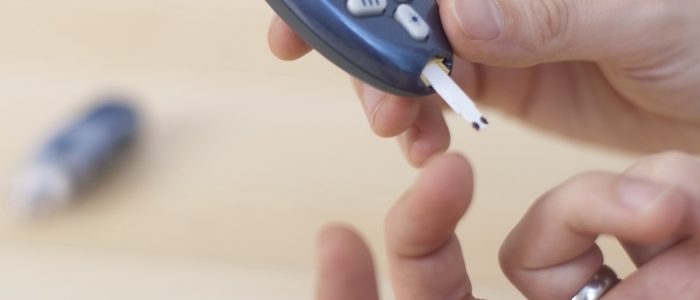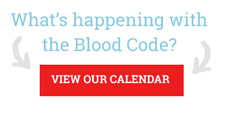How lean is too lean? And what to do if it’s you.
- By Dr. Richard Maurer. Author of The Blood Code: Unlock the secrets of your metabolism
We all know the narrative of the couch potato with excess weight gain and high blood sugar—The blood sugar (glucose) goes up with a combination of inactivity and insulin resistance. But is there an opposite? Could eating a low-carb Paleo diet and practicing metabolically challenging circuits result in excess leanness or low blood sugar?
Yes, sometimes, but it is rarely black and white. With interval training and a low carb, hypocaloric diet, your body will move away from insulin resistance and high blood sugar and toward a healthier insulin sensitivity. The insulin sensitive state results in a body that is leaner, carries lower circulating blood sugar, and requires less insulin—the hormone that signals storage and preservation of calories. This is good—you will be leaner, your circulating fats (as triglycerides) will be reduced, your insulin will lower and you will experience lower overall blood sugar.
But too much of a good thing is too much. In my clinical experience, this is especially true with endurance athletes. With training frequency and long-duration exercise, perhaps greater than two hours, insulin sensitivity can be overly expressed. This results in crashes in blood sugar (hypoglycemia) and/or excessive weight (not necessarily fat) loss. Let me explain how you can look for this and what it all means.
First, check the following—These are all part of the Blood Code Metabolic Discovery Panel – remarkably affordable here at ULTA
- HgbA1c should be 5.2-5.7% in athletes. If HgbA1c is <5.1% this indicates blood sugar is dipping low sometimes, perhaps below 65-70 mg/dL.
- Fasting Blood Sugar (glucose) of 75-95. Again, lower than 75 and I suspect that episodes of hypoglycemia are occurring.
- Serum Insulin should be between 3-8 uIU/mL. If is is low, below 2.0 uIU/mL, finessing higher carbohydrates into the diet can assist recovery and anabolic effect.
- Triglyceride / HDL ratio: A healthy ratio is 0.5-1.5. I expect athletes to be in the metabolically lean 0.5-1.0 range. But below 0.5, there may be inadequate triglyceride to provide energy during fasted exercise.
- [I also check Ferritin (which is not just a storage form of iron, but a hormone-like compound in muscles) and B12, low levels of either compromise recovery.
A word about blood sugar testing, and how to double check HgbA1c:
If HgbA1c is high or low, you can look closer at daytime glucose readings. I personally use the old-school, simple Bayer Contour I will be checking out the continuous glucose monitors (CGM) in the next months, but for now – I recommend the following: Do a glucose check about SIX times in one day with a diet and fitness log on that same day. This gives a nice visual of what is happening with circulating glucose pre and post meals and after a couple months there are enough data days to see trends. In my clinical experience, what feels like hypoglycemia to people is usually not low blood sugar.
TOO LEAN Defined:
- Triglyceride: <40 mg/dL (<0.45mmol/L)
- TG:HDL (as mg/dL) ratio <0.5
- Low Body Fat percentage: <10% for men and <15% for women
LOW BLOOD SUGAR / HYPOGLYCEMIA Defined:
- HgbA1C of <5.1% (<32mmol/mol)
- Fasting blood glucose <75 mg/dL (<4.2mmol/L)
- Any daytime blood sugar <70 mg/dL (<3.9mmol/L).
WHAT TO DO IF “TOO” LEAN:
Your body requires adequate recovery time between bouts of training and fitness, adequate protein intake to recover from tissue damage, and a healthy replenishment of the storage sugars (glycogen) back into the liver and muscles. Your reserve of fat calories is relatively low when triglycerides are low in the bloodstream and tissue body fat percentage is low. We love that metabolically demanding exercise in a modified fasted state plus and a low-carb-high-fat diet effectively make us more fat-adapted, allowing preferential burn of fats for energy. But with a limited bank account of fats to draw upon, your body will need alternate energy sources. It is true, in my experience, that men tolerate this state better than women. And I believe it is due to the overall higher muscle mass that allows more glycogen storage, thereby preventing a caloric or glycemic crash.
A low carb Paleo diet will certainly help you become leaner and more insulin sensitive, but for best recovery, some healthy carbohydrates may need to be added into the diet to support and recover from sustained activity. Sweet potato, any root vegetables, winter squashes, and even some properly prepared pulses/legumes are great ways to get these starchy carbs into your diet. Personally, I am not a big guy, and when my body goes below 10% body fat, I lose muscle power and strength and get sick if I push any harder. I do not feel ‘tired” at this low body fat, because adrenaline releases to keep my blood sugar stable—the resultant emotional state is anxiousness. I increase my protein and carb and adjust my activity to provide better recovery time which allows my body fat percentage to reach 11% or 12%. This sounds like a small change but it is a 20% increase and makes a huge difference personally.
WHAT TO DO IF LOW BLOOD SUGAR:
I find this to be rare, especially if you follow a paleo or LCHF diet. If I look at the past ten clients where hypoglycemia was confirmed, eight of them were women short stature, under 5’5”, and not muscularly developed. They did not have adequate muscle mass to provide glycogen storage. In these cases, I emphasize higher dietary fat and “slow” fibrous meals to trickle absorption of carbohydrate.
The other two-out-of-ten cases would be due to prescription drug intake. Opiate and Narcotic pain medications, stimulant drugs and diabetic hypoglycemic medications all play and obvious role in hypoglycemia. But other medication side effects are updated regularly, so seek out an inquisitive healthcare provider to look in this direction if suspect.
I believe blood tests are a necessary step to see how your diet, metabolic tendencies and fitness interact. Myself personally, I tend toward high blood sugar (pre-diabetes) and have a strong family history of type 2 diabetes. This means I can eat very low carb and exercise on an empty stomach for hours yet brilliantly remain normoglycemic. In fact, at fifty years of age, I can’t get hypoglycemic if I tried. I view my tendency toward insulin resistance as a magical trait that allows extended activity without food while maintaining adequate glucose to fuel my brain. But don’t do as I do. Run some blood tests and make some changes—Discover what your body needs to find glycemic balance and perfection within your optimal lean.




Comments are closed.